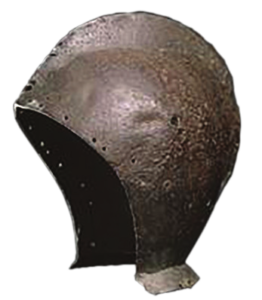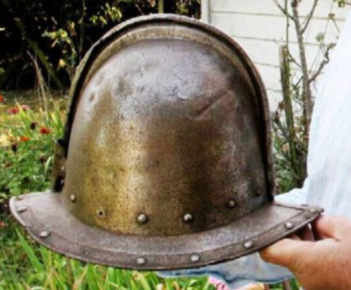Sidestep: Did the Spanish get here in 1574?
- IJ
.jpg/v1/fill/w_320,h_320/file.jpg)
- Aug 7, 2021
- 5 min read
Short answer - quite likely. There was much exploration from various European countries at that time and many who many have arrived here could have been killed, shipwrecked or lost at sea on their return. A Spanish helmet was found in the Wellington Harbour but that doesn't prove anything on it's own. But a Portuguese one was reportedly found in the Manukau Harbour too. Spanish armour is supposed to have been found on the Pouto Peninsula, but no photo exists of any of it, and seeing as the Spanish arriving here does not change tangata whenua status or anything relating to Maori, the fact it's hidden is ludicrous. If Maori are determined to lambast Cook as a murderer, (ironic coming from Maori) then surely they'd welcome a Spanish discovery instead.
Is there a cave on the Pouto with spanish artifacts in it? Once again, just as likely, but nothing has been proved as yet. Dive Pacific is even presenting a prize to anyone finding a reported 'Spanish treasure'. Now all that gets a bit too tacky for me when they offer a prize for a treasure hunt!
Winston Cowie presented a picture of a map on the wall of the Madrid Naval Museum, Spain, celebrating the voyage of Juan Fernandez to New Zealand in 1574. It shows NZ in very good detail. That picture is below. Many say it is genuine, but have a closer look... It shows the coastline of NZ which is strangely accurate - yet they did not sail around it. That map is not genuine. No legend is known among Maori of a contact that far back, (but there is the Rumahunga skull we presented some time ago...)
In the 1980s, Dr Helen Wallis was top of her field and president of both the British and International cartographical and mapping societies. She was awarded an OBE in 1986. After reviewing the map below she said “the balance of evidence was in favour of a Portuguese discovery.” Interesting, as the map shows NO circumnavigation of an island they 'apparently' mapped. Juan Fernandez did map the coast of Chile, but none of his historical writings go further than that. The map below is made up. It evens shows he passed the country, not sailed around it to map it. Why do people not to see the obvious... in a map that shows the obvious? Is it the ecofact/artifact scenario? More interestingly, there is no record of this map in the museums digital collection...! Ask yourself why?

Remember the stone bird of Tainui we presented a few times? Maybe the 'Korotangi' was a relic from Indonesia (where the jade it is made from, comes from) and was brought here by a ship that wrecked? The iron helmet likely dredged from Wellington Harbour in the early 1900s, dated way back to 1560-1580, but that does not conclusively prove it arrived here in 1570. Many a sailor would have relics found from anywhere in the world.
But there is evidence the Spanish did get here at some point for there is an old pohutukawa in La Coruna Police Station Spain. However, the tree is yet to be dated. That, and that alone, will be the key. Why hasn't this tree been dated, or has it and they didn't like the results? Just probing here that's all.
In the 1890s Gustav Shick, one of the first European settlers in the area, was told a story by an elderly red-haired Maori woman who was living on his farm. She told him that many, many years before a ship had been wrecked and men with armour had come ashore. The local Maori killed most of them but allowed some to live. She considered herself to be a descendent of one of them, given her red hair. Well, a DNA test would solve that wouldn't it? Where is the test? They are only $420.
She said they had a chest of treasure that was buried in a cave on the peninsula. This story is corroborated by old Jim and Tom Pomare of Waikaretu Marae. One of them was going fishing one night out towards the Pouto lighthouse, and he came across skeletons and armour lying in the sand. He picked up a helmet which had a skull inside it, and buried the helmet nearby. If this is true, an army of people with metal detectors would find what they needed within 2 days. It hasn't been done because few believe it. But I think there may be something there because I believe the story of the young boy Trevor Shick who took a helmet to school he found when he entered one of the caves on the peninsula and came across a helmet that was described as Spanish or Portuguese. He took it for morning talk to Te Kopuru School in the 1930s. he got in trouble and was told to put the helmet back where he found it. People still living have confirmed they saw him with it. So it is real and it is still hidden.
There is also a Portuguese helmet (above right) in a private collection reportedly dredged up from the Manukau in the 1960's. But can you imagine a ship from the open oceans, so far from home, even attempting to risk their ship and lives crossing the Manukau Bar? I can't. Explorers did not take risks like that. The HMS Orpheus wrecked while attempting a bar crossing in 1863.
It is a Portuguese helmet, so where did it come from? Does anyone have a newspaper report from the 1960's of it being dredged? I'm not so sure. But it is in remarkable condition for being in a salt laden silt environment for 400 years don't you think? Winston Cowie wants a 'treasure hunt' believing a box of gold or silver or something exists in a cave on the Pouto! Keep in mind he is a film director and has no real agenda... (!)
Regardless, any find of a suit of armour, helmet or even skeletons dated prior to 1642 does not change a single thing other than Tasman was not the first, but I never believed he was anyway. We've always said you have to get back home in order to tell your story. Many didn't get back home and therefore their stories were never told and their artifacts were lost forever on the bottom of the oceans. The Portuguese arriving here does not change Maori, those before Maori, or the giant bones have, or anything else. It would just remove Abel Tasman as being the first 'proven' European (with a name that can be attributed to the sighting of these islands.)
Still - imagine finding a helmet like that. It would be very cool. Not quite as exciting as finding an ancient tribal artifact like pou from the Pouto that Stringer found, or Tangonge, or the Kaitaia slab with spiked creatures on it. And still not as exciting as the long femur we have, but if you want to join a 'treasure hunt' so they can make a film about it like some of those ridiculous artifact search programs on the History Channel, here is the link...
https://divenewzealand.co.nz/the-great-new-zealand-discovery-puzzle-could-you-help-re-write-history/




















































Comments